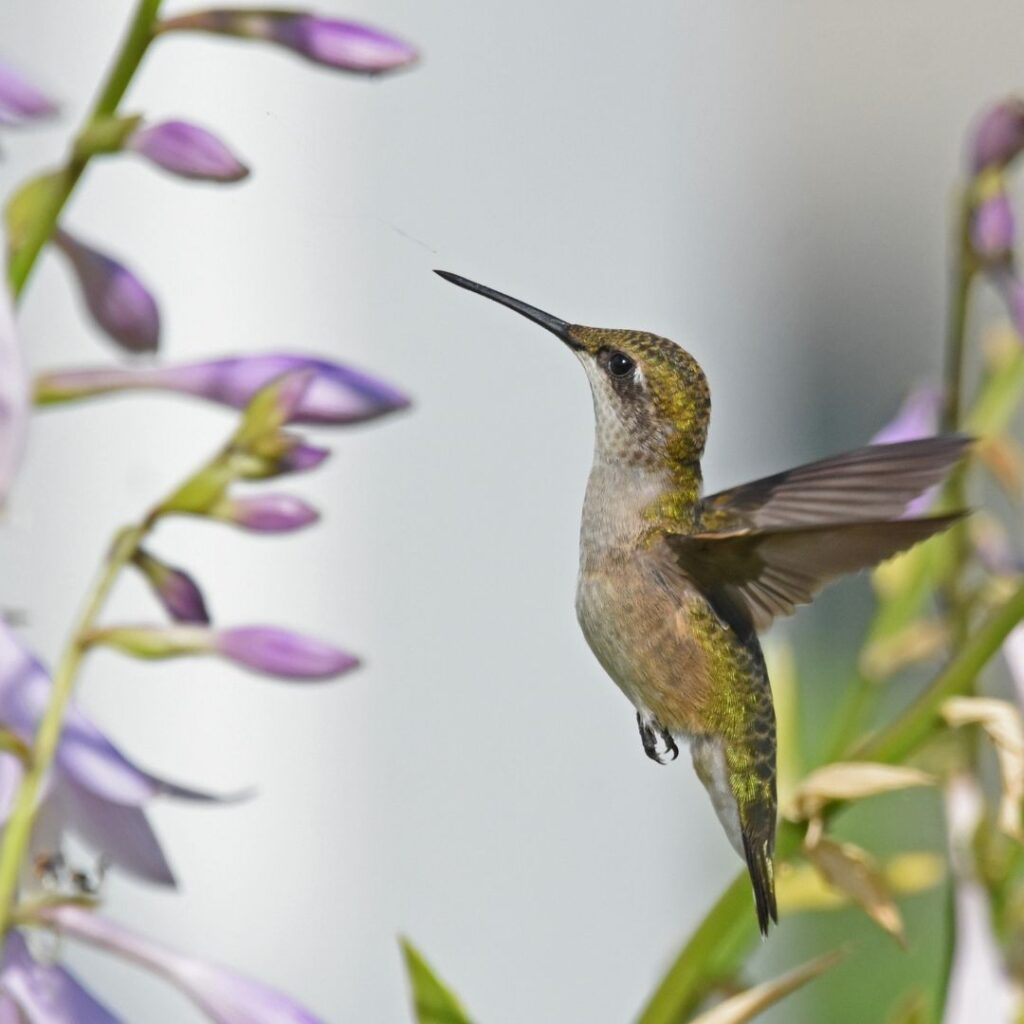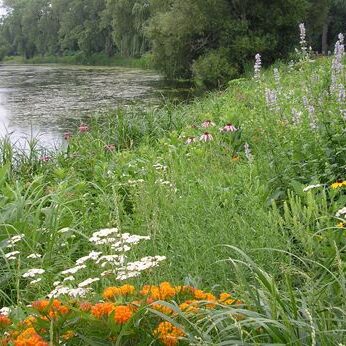Hummingbird Population Trends: What You Should Know
Many North American bird populations are in decline, but does this include hummingbird species? This question was investigated in a recent research article published in the journal Nature called Current contrasting population trends among North American hummingbirds. Of the 16 hummingbird species found north of Mexico, the study looked at eight which included the five species of hummingbirds found in Canada. Four of these species: Calliope Hummingbird, Black-chinned Hummingbird, Anna’s Hummingbird, and Rufous Hummingbird, are all typically found in the west, while only the Ruby-throated Hummingbird is usually found in eastern Canada (including the Land Between) .
Within North America, hummingbirds fill very important ecological niches by pollinating at least 184 different species of plants! However, unfortunately scientists have noticed that the populations of most hummingbird species are in decline and breeding is occurring earlier than historical records show. Changes in breeding time can have negative consequences on the health of offspring because it may cause a mismatch between food availability (when flowers are blooming) and when hatchlings emerge (this mismatch means there may not be enough food to feed offspring. From 1970 to the early 2000’s, the Ruby-throated Hummingbird’s populations were increasing, yet for the last 15 years their populations have generally been declining.
Why exactly is this happening to Ontario’s Ruby-throated Hummingbirds?
Scientists hypothesize many reasons for the recent drop of the Ruby-throated Hummingbird population including: habitat loss, agrochemical use, increased incidence of forest fires, overpopulation of deer, and shifts in plant life cycles. Each theorised cause is summarised briefly below:

Habitat loss: Migratory birds are transcontinental! This means that the actions that occur in many countries affect their health and population size. Such is true for Ruby-throated Hummingbirds. Ruby-throated Hummingbirds migrate from Canada to Mexico and Central America to overwinter (just like how many Canadian humans do to Florida to stay warm in the winter!). Human Humans alterations, like deforestation, of their overwintering habitats could negatively impact their ability to survive and travel back to Canada to reproduce.
Agrochemical use: In their breeding ranges (Canada and the United States) chemical applications to agricultural fields could be reducing the viability of surrounding habitat for reproduction and may also have direct toxic effects on hummingbirds.
Forest fires: Due to climate change, over the past several years there have been increased incidences of forest fires in the Ruby-throated’s home/habitat range. The increased number of forest fires are correlated to decreases in Ruby-throated’s population size.
Overpopulation of deer: In many areas of North America, deer populations have increased dramatically due to a lack of predation exasperated by habitat fragmentation (helps to isolate deer from predators like wolves because their habitat is broken in to many small parcels of land which are difficult to travel between). This rise in deer populations has negative impacts on forests because they overgraze the understory and eat many sapling trees. The Ruby-throated Hummingbird is an indeterminate canopy nester meaning that they nest in trees that are 0.5-7.5m above ground. This size of tree can be negatively impacted by deer grazing and thus, could potentially be contributing to the Ruby-throated’s diminishing population size.
Shifts in plants’ life cycles: As climate change progresses, plants are starting to sprout, flower, and fruit at different times than historically recorded. This change could potentially impact the availability of food sources for many species and may be causing a mismatch in timing. For example, Ruby-throated Hummingbirds have historically migrated from overwintering grounds at the same time every year, but are now arriving at breeding locations 18 days earlier than previously recorded. If these hummingbirds arrive in habitats and their nectar plants are not flowering this means that they do not have vital food sources and could starve.
How you can help!
Hummingbird populations throughout North America do indeed seem to be in decline, however, studies show that you can help! For instance, simply planting hummingbird friendly flowers and installing hummingbird feeders can have positive impacts on their populations!
Written by Fallon Hayes, Digital Communications and Education Lead
Works Cited:
English, S. G., Bishop, C. A., Wilson, S., & Smith, A. C. (2021). Current contrasting population trends among North American hummingbirds. Scientific reports, 11(1), 1-9.






 Keep Your Cats Indoors: Disappearing Birds
Keep Your Cats Indoors: Disappearing Birds
Bart Cormier
Since we are well into the Modern Warm Period, a cyclic climate change, perhaps the distribution of hummingbirds has become deeper and wider into Canada for their northern migration destinations. This broader distribution might have something to do with perceived diminished Ruby Throats, for instance. A good test would be to observe extreme northern ranges throughout Canada to determine if this is happening.
I live in northern Florida near the coast. I still see Ruby Throats before mid-March as always. but it has become less common to have nesters, but rather travelers instead.
Turtle Guardians
Thanks for sharing this information and insight!